Rotifers are the first feed for most marine fish species currently cultured around the globe. Although many hatcheries have mastered the art of rotifer culture, it remains an important but variable parameter in achieving predictable larval rearing results with regards to quality and survival. To counteract this variability, marine hatcheries need to innovate and standardize their operation to a higher level.
At INVE Aquaculture, part of Benchmark, we have a tradition to innovate and develop new technologies and products that simplify and support the industrialization of marine fish hatchery production towards the desired high-quality levels.
Natura pRo and ExL feed line is a game changer that enables hatcheries to reduce their rotifer demands by more than 50%, improving survival rates and overall fry quality. It offers hatcheries unmatched solutions as:
- Predictability and quality of the fry production will increase
- Flexibility of the production system will increase
- Production costs and risks will be reduced
Natura pRo and ExL is the result of INVE Aquaculture’s unique knowledge based on many years of research ranging from ingredient selection, feed production techniques to larval rearing protocol development.The challenge of introducing dry feed from early stages in commercial marine fish larval rearing
Dry feed introduction from the start of exogenous feeding in marine fish larvae has always represented a major bottleneck due to various reasons:
- The underdeveloped digestive system of marine fish larvae limits the digestibility of compound feeds with high nutrient density.
- Performance in terms of survival and fry quality.
- Keeping water quality parameters stable with low water exchange
- Feed palatability and assimilation
- Complex to implement in commercial hatcheries day to day operations
INVE however, successfully realizes the vision of introducing dry feed from the first feeding onwards using the combination of Natura pRo and ExL. This combination addresses the above challenges via a multidisciplinary approach. They ensure not only high level of rotifer substitution but also simplicity in the protocol application enabling hatcheries to improve their biological performance and economical result.
Natura pRo and ExL consist of two formulations building on each other targeting rotifer substitution by at least 50%. Furthermore, they are supporting the nutritional and technical needs from start of exogenous feeding until post-weaning.
The Natura pRo <100µm & 100/250µm
The Natura pRo formulation is designed with special attention to ingredient selection targeting optimal nutrient assimilation and palatability, and, thus, guaranteeing the attractiveness of the feed for larvae from the start of exogenous feeding. Our feed processing technique applied in this formulation results in a dry feed with a narrow particle size distribution ensuring more than 90% feeding success in 48hours (based on customer data) from first application. Last but not least this technological application also ensures excellent stability of the feed particle avoiding the leaching of nutrients. Moreover, keeping water quality stable and excellent behavior in the water mimicking rotifers ensures that fish larvae feed efficiently from mouth opening onwards.
This has been validated in several field trials. The strategy during this phase is to reduce the usual daily rotifer quantity by at least 50%. From our experience we learned that using the powerful combination of few high-quality rotifers with Natura pRo continued by ExL results in different realities at commercial scale but confirms improved survival and quality performance when compared to standard larval rearing protocols.
The Natura ExL 200/400 µm & 300/600µm
Ensuring optimal results when substituting a critical feed item like rotifers without any compromise on quality and performance implies that nutrition in the following stages is of the highest standard. The ExL formulation supports high survival rates even during weaning. The ExL formulation has been meticulously formulated to boost fry robustness, ensuring that larvae are at least as robust as the ones fed with standard rotifer quantities.
Overview of trials at commercial scale
After years of product and protocol development we achieved a consistent result, enabling hatcheries to move to the next era of modern marine fish hatchery production. The following results are an overview of various trials rearing Sea bream (S.aurata) at commercial scale in Europe. These trials compare a standard larval rearing protocol (LFC) and the Natura pRo and ExL feedline and protocol with more than 50% rotifer substitution.
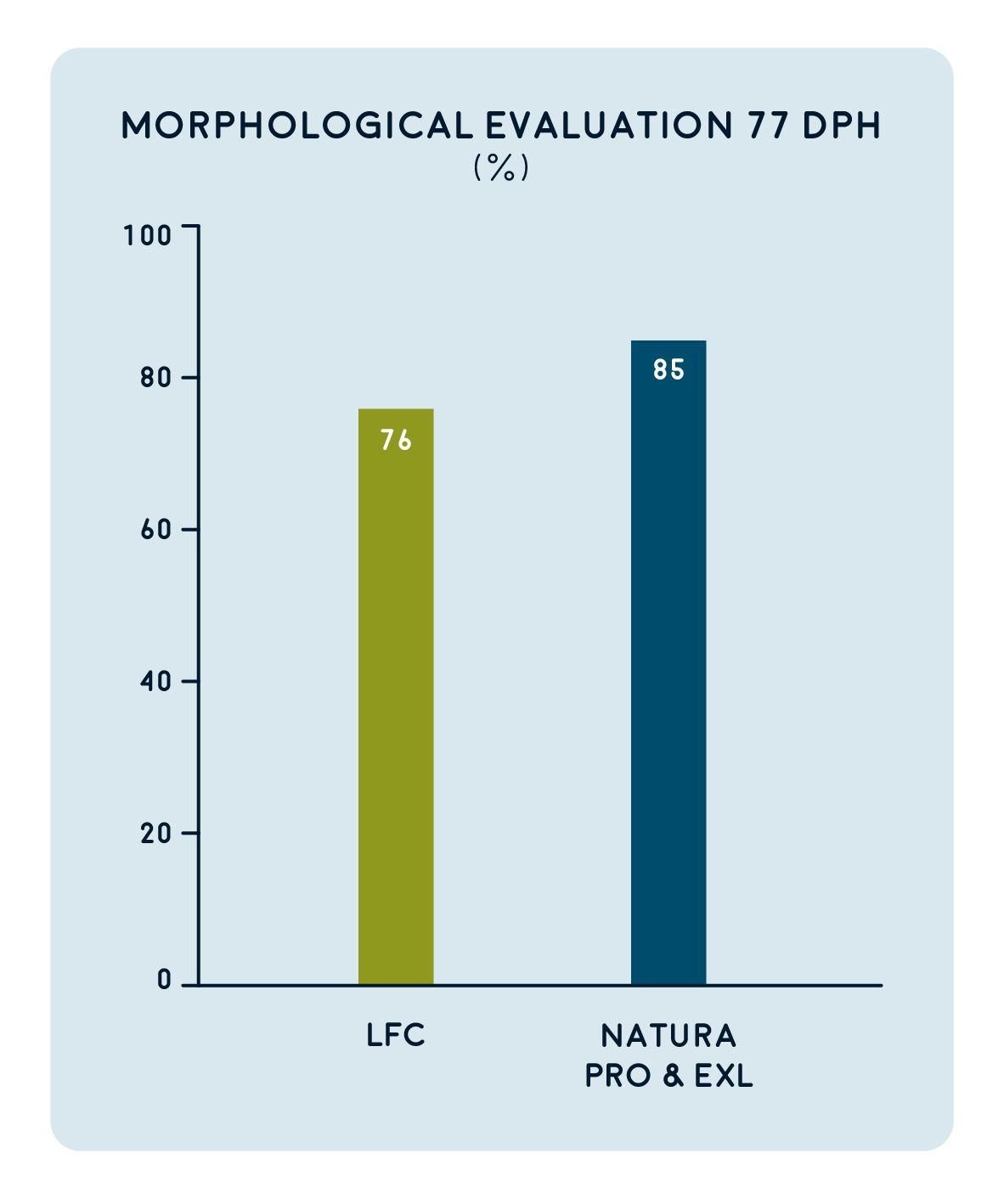 | Malformations are one of the biggest challenges experienced by hatcheries and have serious repercussions on production and revenue. Its causes are multifactorial and range from genetics, water quality husbandry techniques and, last but not least, nutrition, which is the base for any living organism to develop optimally. Scientific evaluation has shown a positive trend in reducing the occurrence of morphological abnormalities. Natura pRo and ExL is supporting producers to achieve improved results via top notch nutrition. |
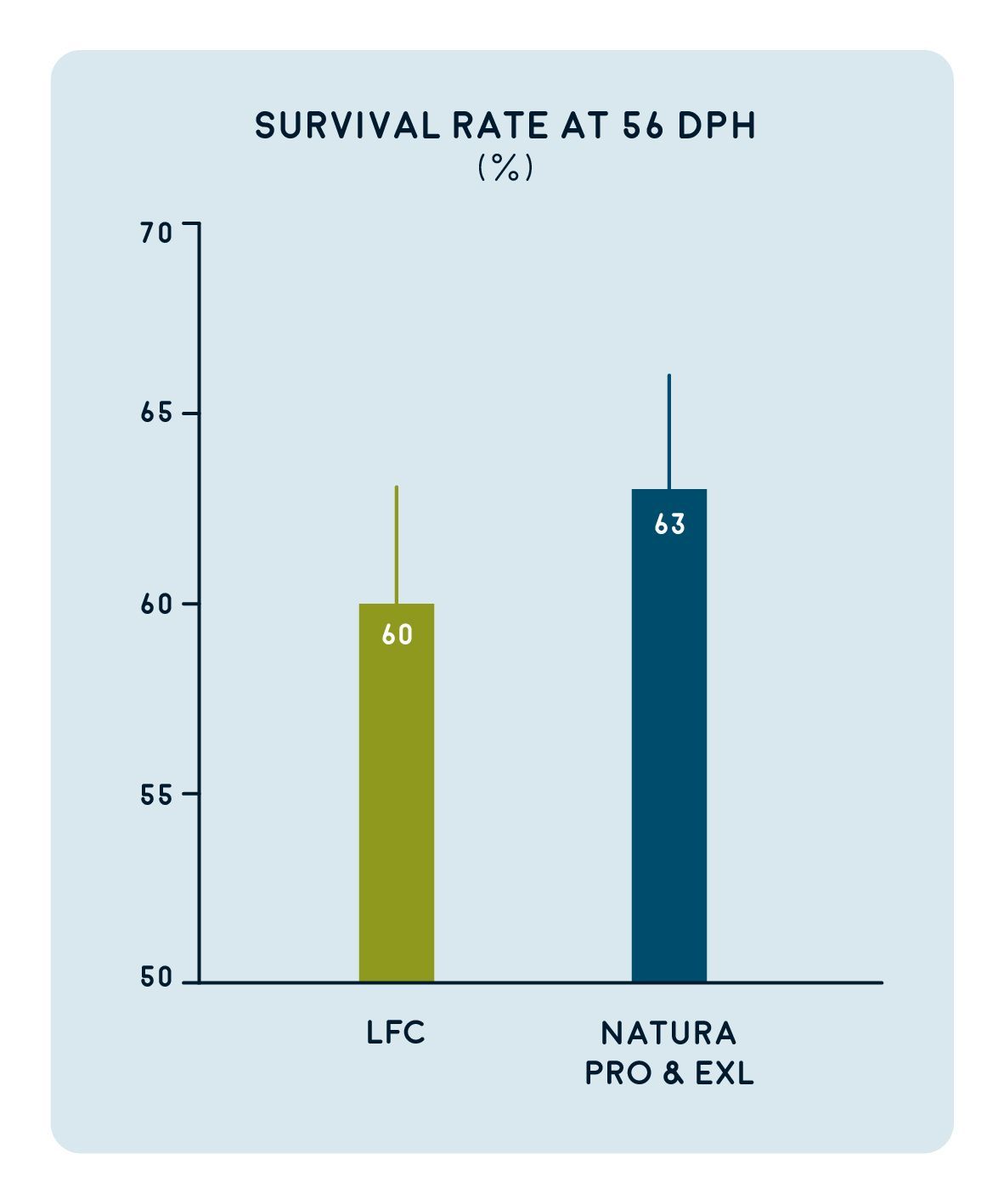 | Survival rates have increased constantly over the past 20 years. With Natura pRo and ExL one can not only maintain such high survival rates. Moreover, applying the protocols correctly can ensure even significant higher rates compared to present practice, even under demanding conditions. |
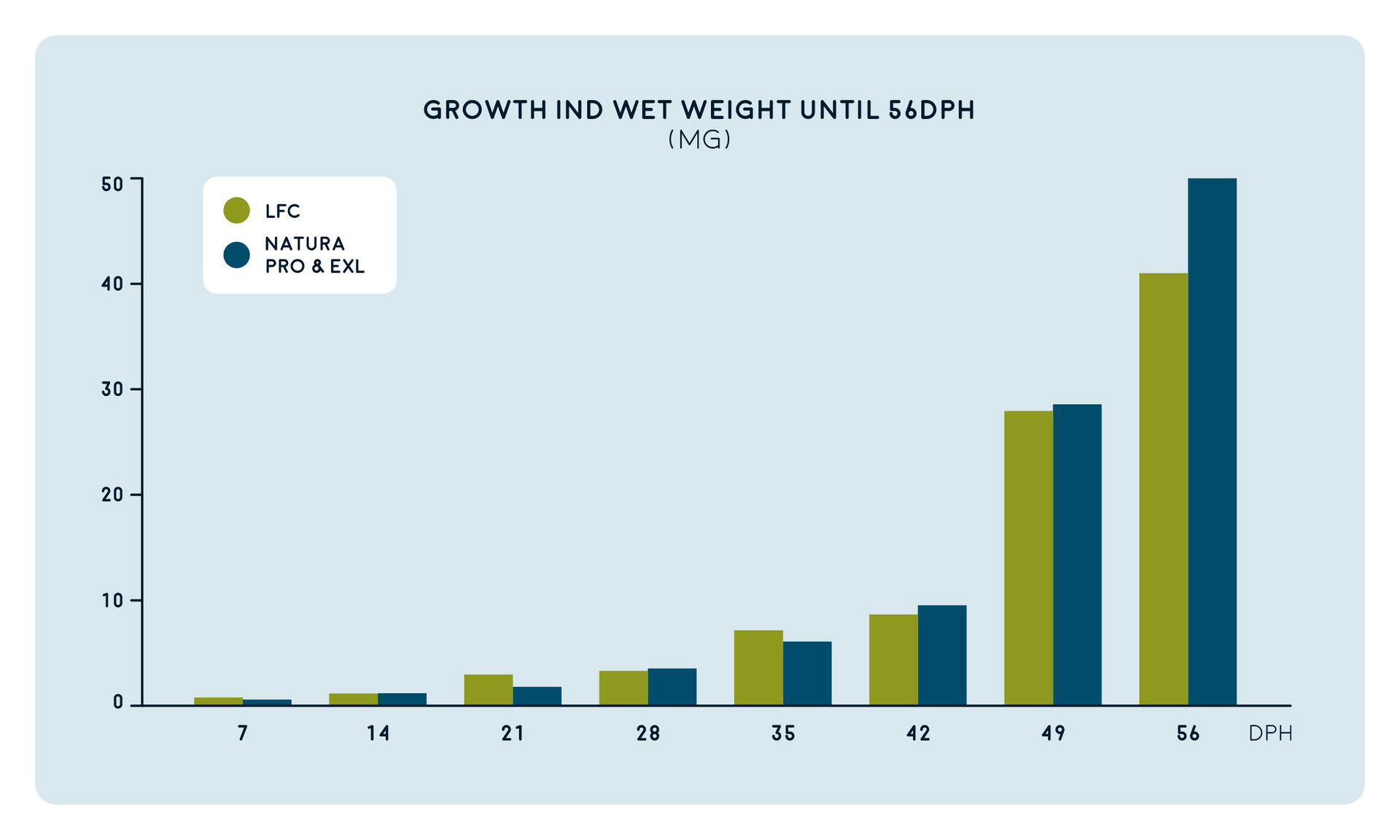
Generally speaking, growth performance is at least similar or improved under the Natura pRo and ExL protocol. Bearing in mind, substantial replacement of rotifer quantities is realized, highlighting the quality of the feeds in terms of digestibility and assimilation.
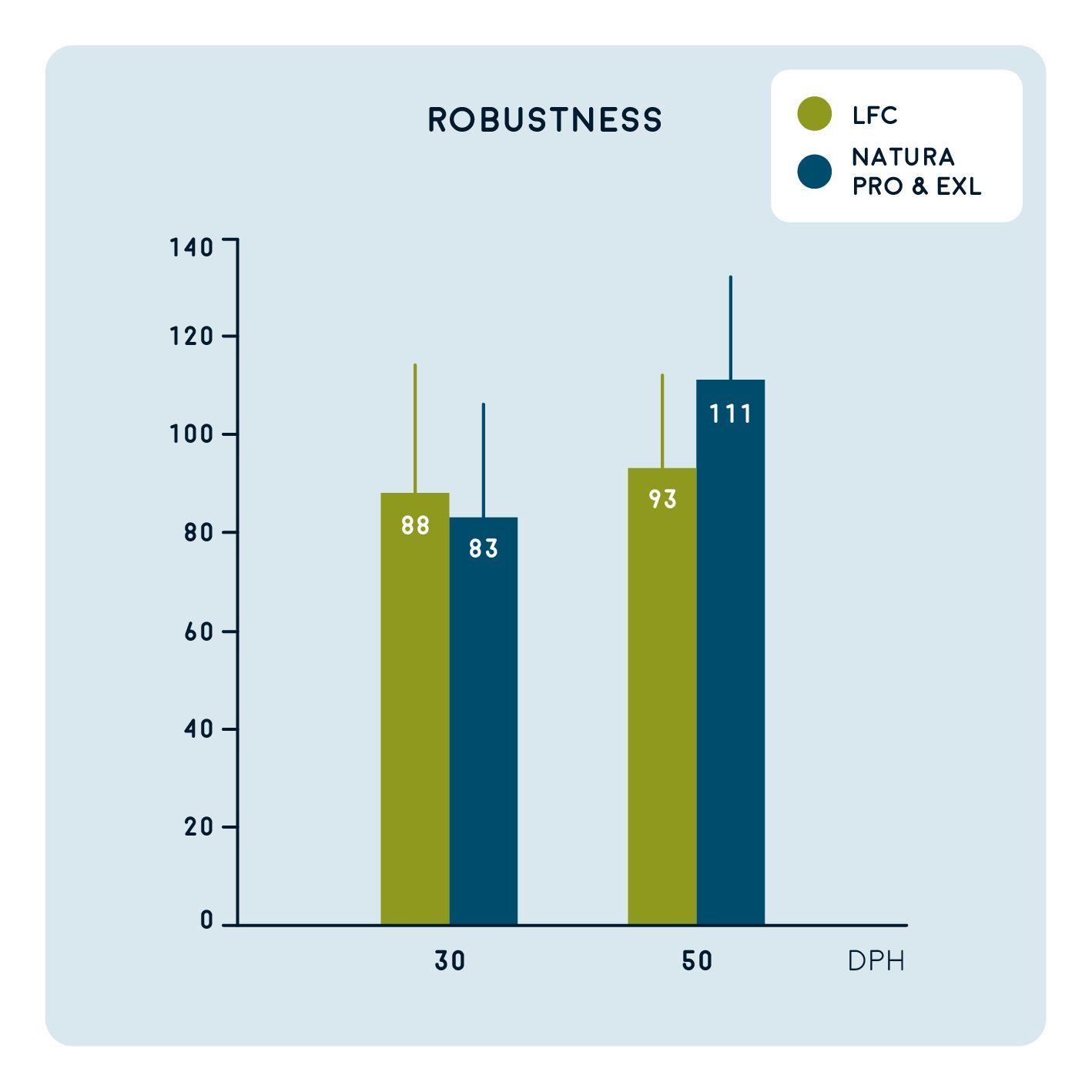 | Fry robustness is an important quality indicator in modern fish hatcheries operations as it indicates the fry condition and their tolerance to stress. Its widely accepted that nutrition plays an important role in determining the stress response of the animals. In this case, Natura pRo and ExL provides similar or better fry robustness (salinity stress test) despite reducing rotifer consumption by more than 50%. |
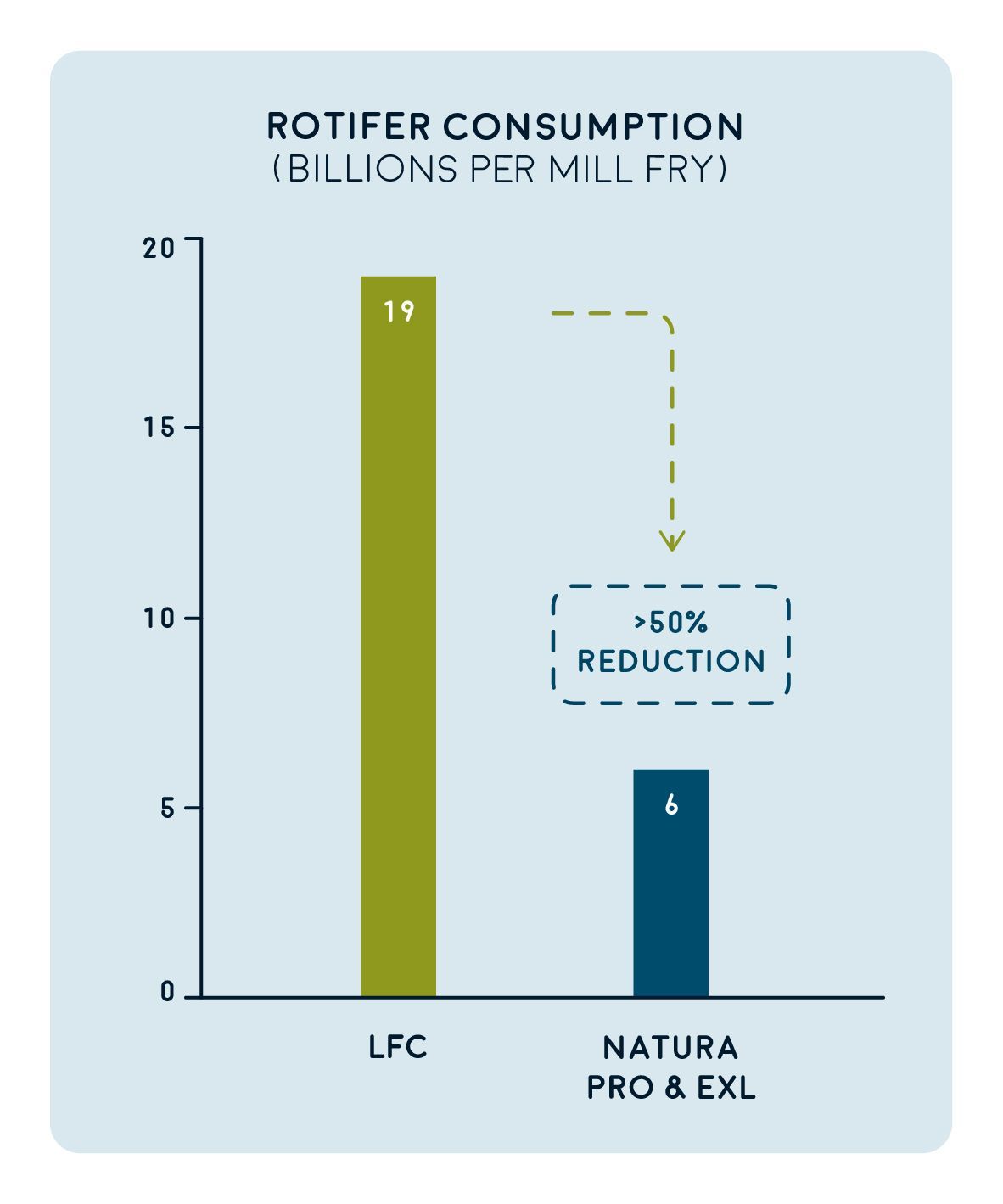 | All in all, rotifer consumption can be easily reduced by more than 50%. This is highly remarkable given that the biological performance is excellent. These results enable hatcheries to move towards a more efficient and standardized production and industrialization. Our own trials revealed even higher replacement is possible. Under commercial testing condition INVE’s IARC center in Italy developed protocols that can achieve up to 80% of rotifer substitution with no compromises on fry quality, survival, and growth performance. |
Rotifer substitution in commercial hatcheries is a process. At INVE Aquaculture we believe that the main target is to improve the fry quality and, simultaneously, simplify and standardize hatchery production. This philosophy is clearly imprinted in our approach. We have worked with various hatcheries in order to challenge rotifer substitution under various commercial conditions. The results verify advantages in terms of productivity and production efficiency when compared to standard hatchery procedures. It is clear that the implementation of a rotifer substitution protocol with Natura pRo & ExL is easily integrated into standard larval rearing protocols facilitating the daily operations in the hatchery and allowing for its industrialization.
Considering the results, Natura pRo and ExL managed to reduce feed item cost per million fry by at least 7% based on real-world economic models. At INVE we firmly believe that it is via efficiency and innovation that the industry will achieve better profitability and predictability.
INVE Aquaculture, part of Benchmark, is widely known as a partner that provides complete solutions fine-tuned to local conditions. Successful rotifer substitution can be achieved easily, and with Natura pRo and ExL we provide a solution for protocol customization to achieve the unthinkable in your hatchery.
More information can be found here
Authors: Steven Debono – Product Portfolio Manager Fish Nutrition, Tania De Wolf – R&D Engineer & Jessica Teske – Aquaculture Researcher.
This article was published in Hatchery and Feed Management Magazine – December 2021 edition



